Sara Udon is a Japanese take on the popular Chinese crispy noodles dish with saucy seafood and vegetables. Skip takeout and make this Nagasaki fried noodles recipe at home tonight!
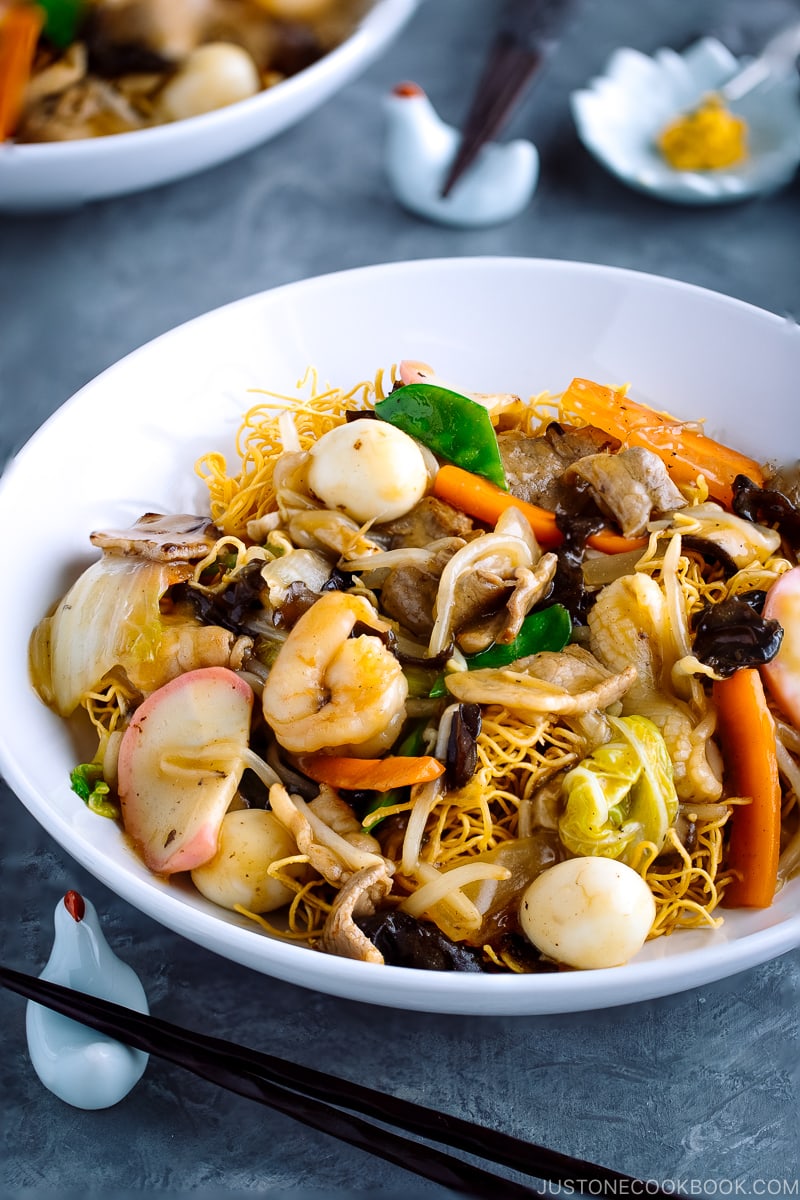
Since I was small, I’ve always loved foods that have a crispy and crunchy texture, and Sara Udon (皿うどん) was no exception. This noodle recipe is the Japanese version of the classic Chinese dish – Crispy Noodles with Seafood 海鮮炒麵, featuring stir-fried seafood, pork, kamaboko fish cake, cabbage, bean sprouts, and other colorful vegetables, atop a bed of pan-fried egg noodles.
Sara Udon was always my first favorite at the Japanese-style Chinese restaurant while the other kids would go for Chahan (炒飯 – fried rice) or Gyoza. When the plate of noodles served in front of me, I made sure to devour the crispy bits of noodles as fast as possible before they get wilted from the remaining heat of the sauce on top.
Watch How to Make Nagasaki Sara Udon
A Japanese take on the popular Chinese crispy noodles with saucy seafood and vegetables. Forget take-out and make this Nagasaki Sara Udon tonight instead!
What is Sara Udon?
Sara Udon (皿うどん), literally means “plate noodles” in Japanese. It consists of two parts: crispy fried noodles on the bottom and stir-fried seafood, pork, and vegetable sauce on top. All the ingredients in the soup are thickened with a small amount of slurry, so they coat well with the noodles.
By now you’re probably wondering where is the “udon noodles” as it’s called Sara Udon.
Well, the definition of udon can be a little ambiguous at times. Before it was called Sara Udon, the dish used to be one of the versions of Champon – a noodle dish introduced by a Chinese restaurant Shikairō (四海楼) back in Nagasaki, where Champon was first created. If you are not familiar with Champon, you can read my post first.
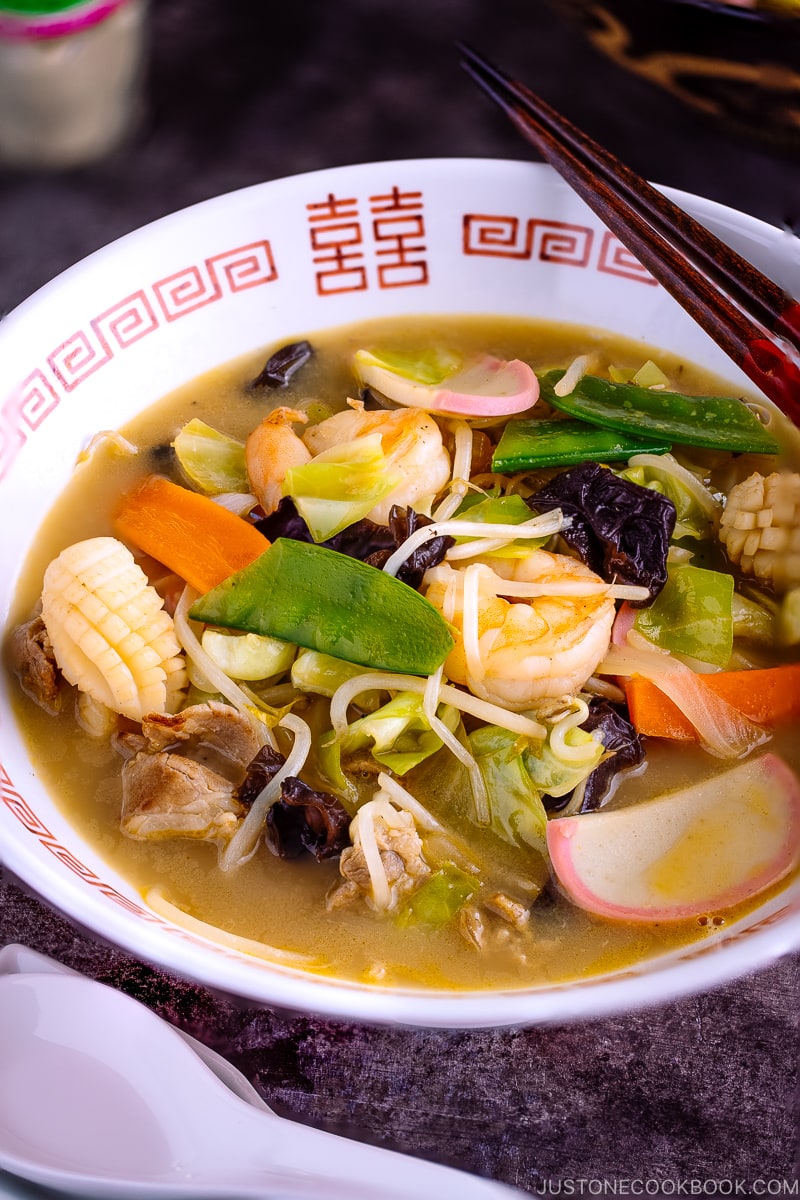
Thick Champon noodles, which look slightly like a thinner version of udon noodles, were served on a plate, and the ingredients were served over the noodles without soup for the ease of home delivery. Since the noodles were served on the plate, this version was eventually named Sara (“plate”) Udon instead of Champon.
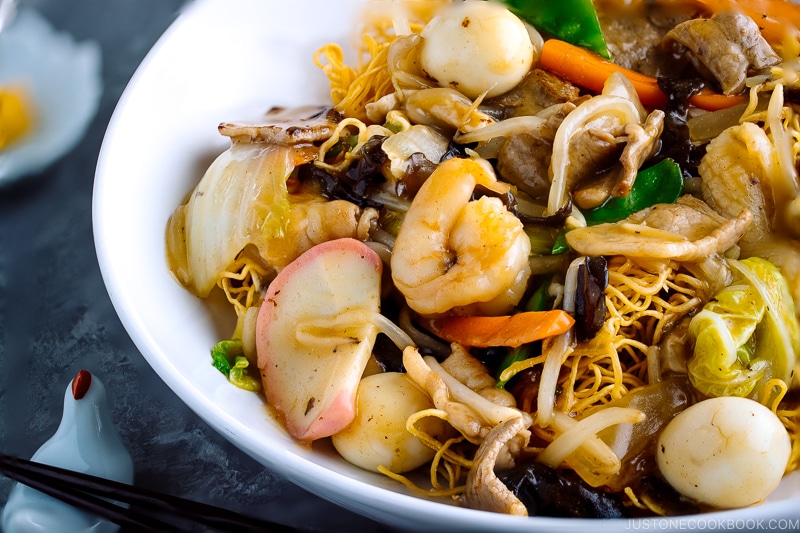
Later on, thin noodles that are fried to crispy were introduced and became another version of Sara Udon. The soup thickened with slurry and that has become the mainstream of what Sara Udon is nowadays.
These days you can find Sara Udon being served with two different styles of noodles. The first style is similar to Cantonese-style crispy chow mein (or more notably Hong Kong Crispy Chow Mein) where thin egg noodles are fried in oil till crispy. The second style uses thicker Chinese noodles that are pan-fried like Chanpon noodles. Both are common in Nagasaki, but Sara Udon outside of Nagasaki area mostly uses thin crispy noodles.
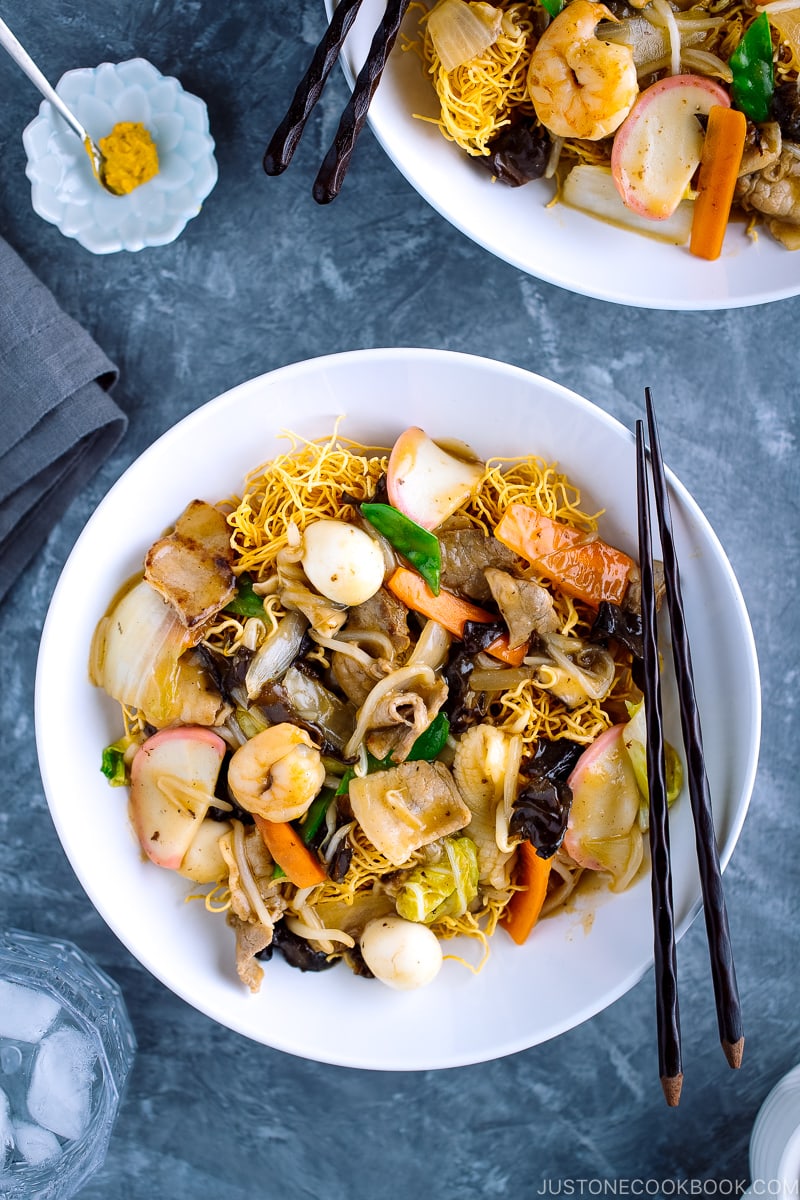
Key Ingredients to Make Sara Udon
1. Crispy Noodles
Where to find crispy noodles? I found this Nagasaki Sara Udon package in my local Japanese grocery store Nijiya Market and I use only the noodles and skip the soup base. If you don’t have a Japanese market nearby, you can visit a Chinese grocery store and look for crispy noodles in a bag.
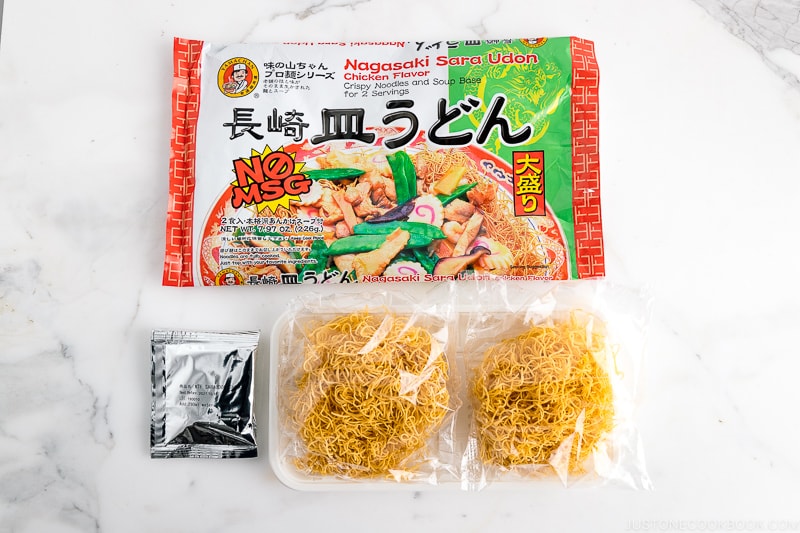
If you prefer to make your own, you can deep fry or pan fry the Hong Kong noodles in your wok.
2. Your Choice of Seafood, Pork, and Vegetables
I have included most of the ingredients that come with Sara Udon in this recipe. They are:
- Pork belly slices (no, it’s not bacon. It’s the pork cut used for making bacon. You can find it in Japanese, Chinese, Korean, or Mexican grocery stores. If they only sell a block of pork belly, slice your own following my tutorial).
- Shrimp
- Squid
- Clams (I skipped them in this recipe since it takes time to de-grit clams)
- Kamaboko fish cakes
- Quail eggs
- Onion
- Carrot
- Cabbage
- Bean sprout
- Snow peas
- Wood ear mushrooms
This may look like a daunting list of ingredients, so you can certainly simplify the ingredients or switch things up with whatever you have on hand.
3. Chicken Stock/Broth Base Soup
The soup base is chicken stock/broth. You can use homemade chicken stock if you have it around (Here’s my chicken stock recipe), or use packaged chicken stock. Each package comes with different saltiness so please adjust the soup base accordingly. It’s important to keep a spoon around and always taste before you finish cooking!
To make a vegetarian or vegan-friendly version of Sara Udon, please use a vegetable broth and “Vegetarian Mushroom Flavored Stir-Fry Sauce” instead of oyster sauce. For protein, you can easily use deep-fried tofu or pan-fried tofu in place of seafood.
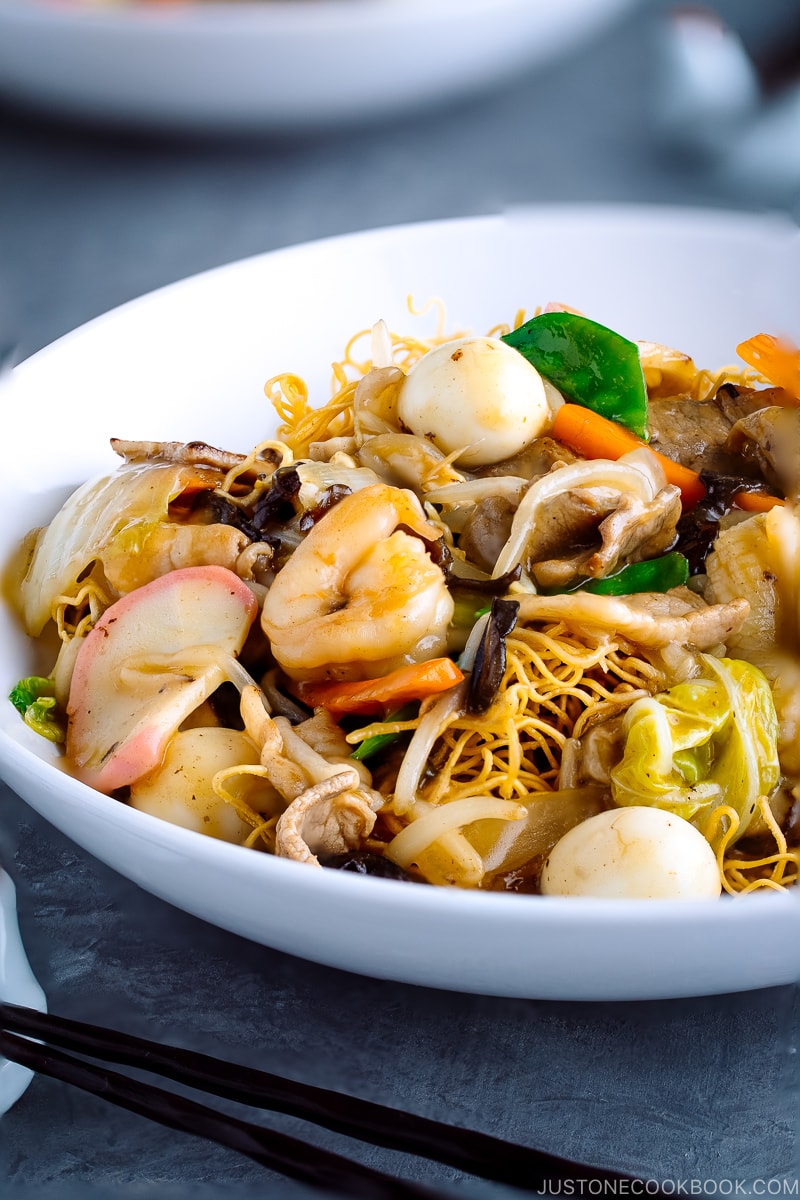
Sara Udon on Kodoku no Gurume
I was inspired to make this noodle recipe after watching the popular Japanese TV drama – Kodoku no Gurume (孤独のグルメ) [Season 6: Episode 7]. The protagonist Gorō-san had a bowl of Sara Udon at Nagasaki Hanten (長崎飯店) in Shibuya. It was exactly the noodles I used to order at Chinese restaurants growing up. So I got to share my version of this recipe!
For those of you who are not familiar with Kodoku no Gurume, the main character Gorō is a Japanese salaryman who is in sales. As a salesperson, Gorō travels across Japan for his work and on each business trip he visits various restaurants and street booths to sample the local cuisine. Each chapter features a different place and dish.

This TV drama has been around for years in Japan, and currently, Season 7 is on air. Unfortunately, it is not available on Netflix like Midnight Diner: Tokyo Stories here in the States, but it’s available on Netflix Japan and other sources. Maybe Netflix USA will pick it up if there’s enough interest in the drama. You can find some of the older seasons available in DVD format on Amazon.
Whether you have access to Kodoku no Gurume or not, I want to share all the delicious foods the main character Gorō-san enjoyed in the show and I hope you would join me in cooking up these dishes.
Kodoku no Gurume Recipes Series on Just One Cookbook
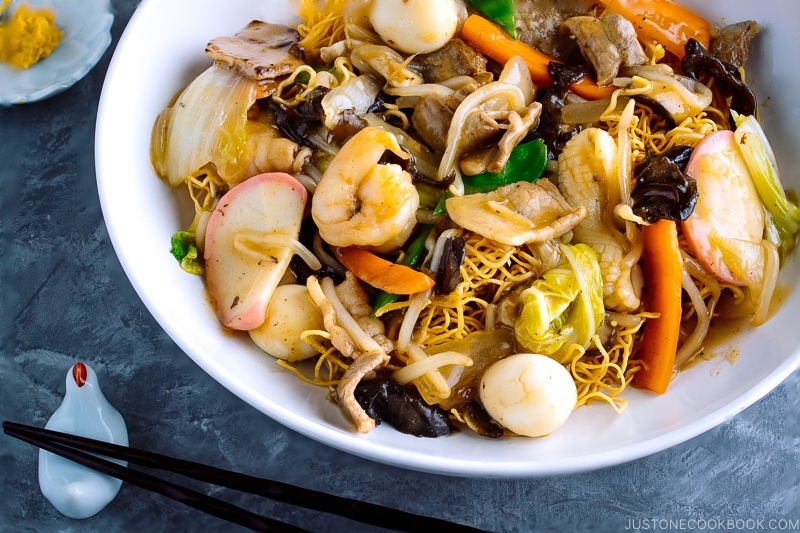
Wish to learn more about Japanese cooking? Sign up for our free newsletter to receive cooking tips & recipe updates! And stay in touch with me on Facebook, Pinterest, YouTube, and Instagram.
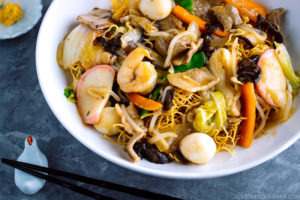
Sara Udon
Video
Ingredients
- 4 oz sliced pork belly
- 2 oz shrimp
- 1.6 oz squid
- 3 tsp sake (1 tsp each for the pork, shrimp, and squid)
- 1 tsp soy sauce (for the pork)
- 2 Tbsp dried wood ear mushrooms
- 6 quail eggs
- 1 oz kamaboko (fish cake) (⅓ block)
- ¼ onion
- 2 inches carrot
- 3 leaves napa cabbage
- 2 shiitake mushrooms
- 4 snow peas
- 1 Tbsp toasted sesame oil (for cooking)
- 4 oz bean sprouts
- ⅛ tsp white pepper powder
- 2 tsp Diamond Crystal kosher salt (taste the dish before adding salt and adjust based on the saltiness of the chicken stock)
For the Sauce
- 1½ cups chicken stock/broth
- 1 Tbsp oyster sauce
- ½ Tbsp soy sauce
- 2 tsp sugar
For the Slurry
- 2 Tbsp potato starch or cornstarch
- 6 Tbsp water
For Serving
- 2 servings deep-fried crispy noodles (also sold as Nagasaki sara udon at Japanese markets)
- Japanese karashi hot mustard
- rice vinegar (unseasoned)
Instructions
- Gather all the ingredients.

To Mix the Sauce
- Combine 1½ cups chicken stock/broth, 1 Tbsp oyster sauce, ½ Tbsp soy sauce, and 2 tsp sugar. Mix all together well and set aside.

To Prepare the Ingredients
- Place in separate bowls the 4 oz sliced pork belly, 2 oz shrimp, and 1.6 oz squid. Add 1 tsp sake to each bowl (3 tsp sake total) to help remove the unwanted odor.

- Add 1 tsp soy sauce to the pork, combine well, and set aside.

- Rehydrate 2 Tbsp dried wood ear mushrooms and cut into smaller pieces.

- Bring a small pot of water to a boil. Take out 6 quail eggs from the refrigerator and carefully place in the boiling water. Reduce the heat to medium low and cook for 3 minutes.

- Once they finished cooking, place the quail eggs in iced water. Once cool, remove the shells.

- Score the squid in a crisscross pattern by making parallel diagonal lines in one direction, then the other. Make sure not to cut it all the way through. Thinly slice 1 oz kamaboko (fish cake).

- Cut ¼ onion into wedges and then cut in half widthwise.

- Thinly slice 2 inches carrot into slabs. Then, cut them in half lengthwise.

- Cut 3 leaves napa cabbage into roughly 2-inch (5-cm) pieces widthwise and then cut them in half lengthwise.

- Remove the stems of 2 shiitake mushrooms and slice the caps.

- Remove the strings from 4 snow peas and cut in half.

- To make the slurry, in a small bowl combine 6 Tbsp water (make sure it’s not warm/hot) and 2 Tbsp potato starch or cornstarch. Whisk well together and set aside.

- Carefully loosen 2 servings deep-fried crispy noodles on individual plates.

To Stir-Fry
- Heat the wok on medium-high heat. Once the wok is hot, add 1 Tbsp toasted sesame oil and the pork.

- Stir to loosen the pork belly slices. Add the shrimp and squid. Stir to combine.

- When the meat is no longer pink, add the onion. Stir well until coated with oil.

- Add the hard bottom part of the napa cabbage and wood ear mushrooms.

- Add the carrot, leafy parts of the napa cabbage, and4 oz bean sprouts.

- Add the shiitake mushrooms, kamaboko fish cakes, and snow peas.

- Add the sauce mixture into the wok and mix well. Add the boiled quail eggs.

- Season with ⅛ tsp white pepper powder and 2 tsp Diamond Crystal kosher salt. Taste the soup to make sure the flavor is to your liking.

- Whisk the slurry one more time and add to the wok. Mix well until thickened.

To Serve
- Divide and pour the stir-fried ingredients and gravy sauce over the crispy noodles and serve. You can add a tiny dab of Japanese karashi hot mustard on the edge of your plate for the noodles (you don‘t have to mix it), if you‘d like. When you want to change up the flavor, drizzle on some rice vinegar (unseasoned) for a different taste (that‘s how the TV show shared how to eat this dish). Enjoy!

To Store
- Unfortunately, the noodles will not stay crispy. Either you keep the toppings separate from the crispy noodles, or you enjoy the softened noodles as they are. You can keep in an airtight container and store in the refrigerator for up to 3 days and in the freezer for a month.
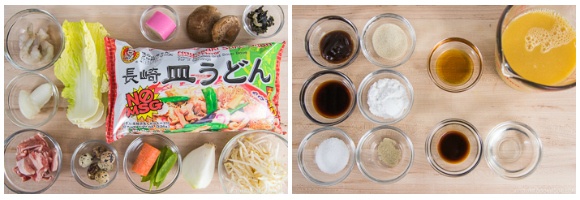




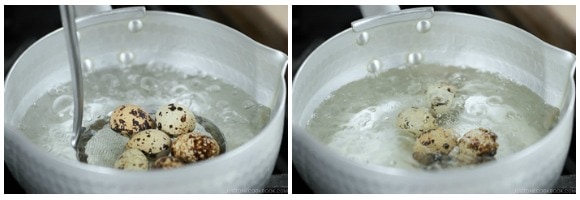
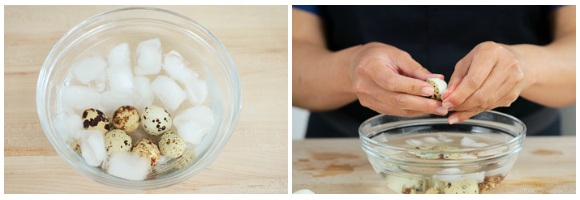
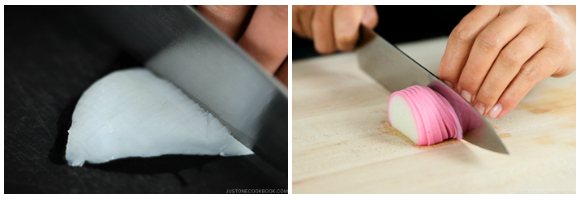
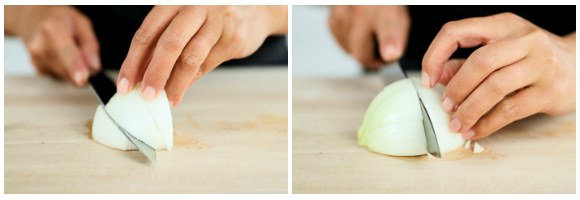
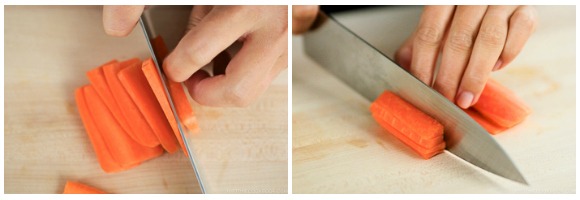
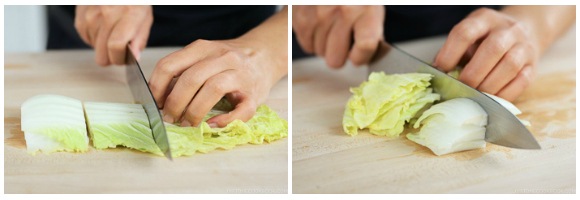
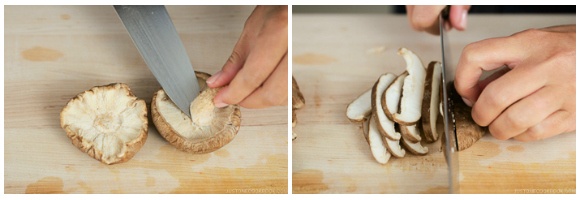
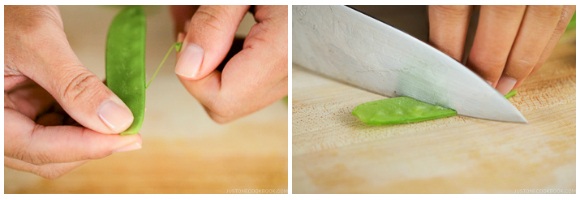
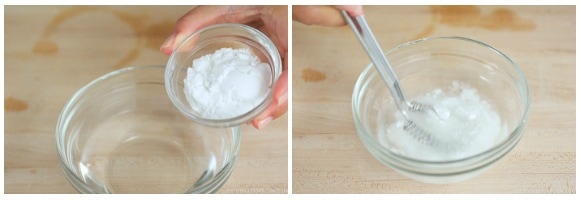

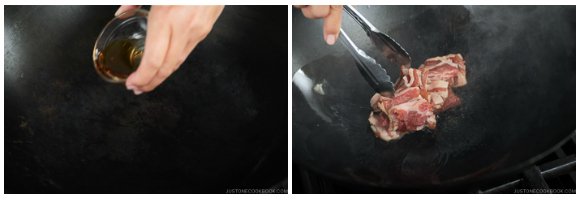
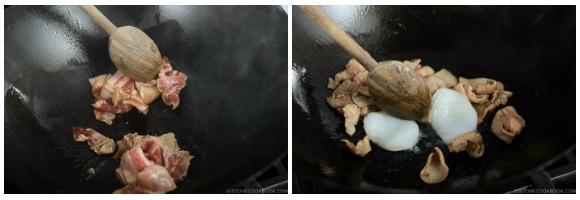
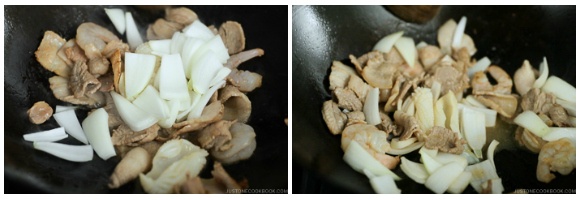
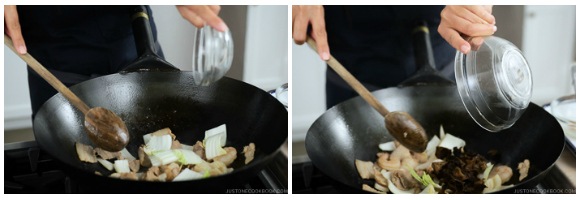
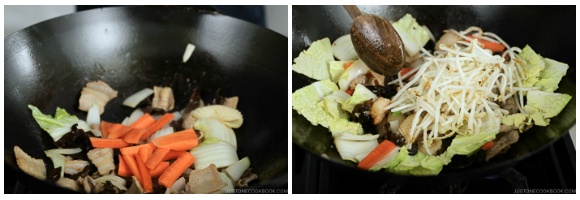
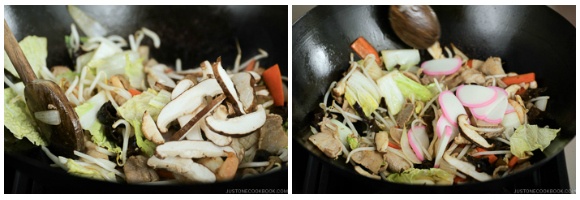
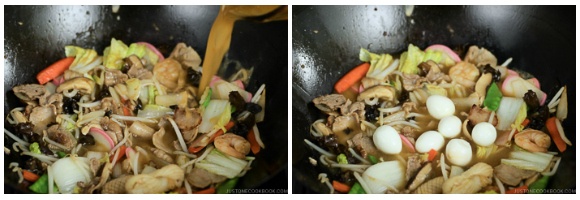

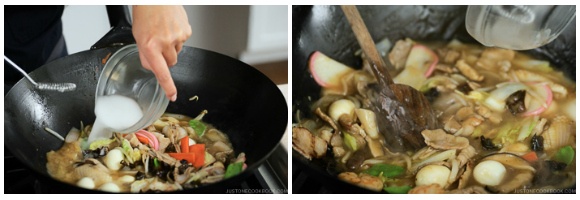
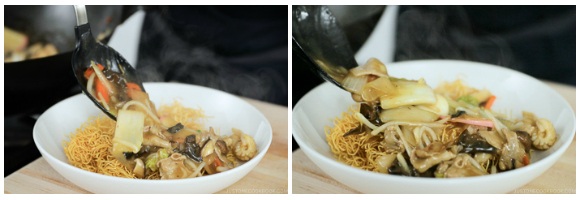










[…] Sara Udon (Crispy Noodles with Seafood) 長崎皿うどん […]
Reads like it would be delicious
Hi Barbara! We hope you enjoy this dish! Happy Cooking!
I received a package of newly frozen sora mame from a farmer friend. What can I make with them? I thought of some kind of “an” but was not sure.
Hi Atsuko,
Currently, Nami does not have a recipe for Sora Mame. But Sora Mame An is a great idea! You can boil it and puree them, then add sugar and a pinch of salt for your taste. Another easy idea is to make Tempura. https://www.justonecookbook.com/tempura-recipe/ or stir fry them with garlic and chili.
We hope this is helpful and you can enjoy them!🙂
I tried this yesterday & it came out so wonderfully! Thank you so much 😊
Hi Tene! I’m so glad to hear you enjoyed this recipe! Thank you for your kind feedback! 🙂
What kind of wok do you use. Looking for a good wok.
Hi Emi! I use this one and love it!
https://amzn.to/2Xq2gCv
[…] Sara Udon comes from Nagasaki and consists of a mixture of seafood, meat, and vegetables in a sauce served over the thin, fried noodles. This Seafood Sara Udon package includes two servings of the thin and crispy noodles along with seasoning packets to make your own Sara Udon at home! […]
This was delicious!!!
Hi Jackie! So happy to hear that. Thank you for your kind feedback. 🙂
[…] Sara Udon (Crispy Noodles with Seafood) […]
Great recipe Nami. Really enjoyed the flavours from this mix of ingredients, although I didn’t have quail eggs unfortunately.
I made the karashi from the powder mix but was a little uncertain how to use it and the vinegar when eating this dish. I served each separately on the side and just added a little as I ate it but wasn’t sure whether to mix the karashi & vinegar? Can you advise?
Keep up the amazing work at JOC!
Hi David! FYI, Asian grocery stores usually sell quail eggs in a can (an option). 🙂
So a dab of karashi paste is placed on the edge of the dish. You would pick a tiny bit with a tip of chopstick and place it on the food you’re about to eat. You can mix it all in, but it’s a preference. Vinegar can be added later on. When you get tired of eating the same taste, you drizzle vinegar and eat the new flavor. That’s what the TV show explained how to eat this dish. 🙂
Hi Nami .. this comment is not related to this recipe though.
I would like to make your sweet and sour chicken-Ootoya style recipe using fish fillet instead. However I am without the black vinegar. Can you kindly advise what would be a good substitute?And would the steps differ if I’m cooking with fish?
As always..THANK YOU for your great recipes????
N Julia
Hi NJ! Yes, you can use fish fillet for the recipe, but I would recommend to cook it separately and add toward the end right before coated with sauce. otherwise it’ll break into pieces. I would coat with flour and deep fry so it gets crispy coating and it will absorb sauce nicely too.
You can use the other vinegar, but please adjust accordingly. Hope that helps!
Hi Nami,
Thanks so much for your prompt reply for my inquiry for kitchenware stores in Fukuoka. I am so excited to head off there tomorrow, and will let you know what I bring back home later.
Glad to know you will have a trip to Montreal during the coming long weekend. Though I am not living in Montreal, it is a city I am so familiar with because my son has already been having his last year university there. The food that definitely worth to try in Montreal is poutine which is a dish originating from Quebec. The restaurant I like most for poutine is La Banquise. There are many different kinds to choose from and the portion is huge. An order is adequate for two persons (especially for ladies). But the restaurant is so popular that there is always a long queue outside. Be sure to be there at off peak dining hours.
Hope you enjoy the trip and happy eating.
Cindy
HI Cindy! Oh I’m so glad my response was helpful. 🙂 Have a fantastic trip to Kyushu!
Thank you so much for your tip! We’ll definitely try poutine, and if our itinerary works we’ll definitely try La Banquise! We’re waiting for boarding now. Can’t wait!!
I believe I found the answer to the question I posted about a condiment that Ringer Hut offers with crispy noodle champon…..I think It is a paste made from “sansho”
HI Bond! There is one Ringer Hut in San Jose – about 40 mins from where I live too, and I’ve been there once. I don’t remember the condiment, but I’m guess it’s either sansho (but usually powder) or Yuzu Kosho (yuzu + pepper paste + salt)?
At “Ringer Hut” I usually ordered “Champon with Crispy Noodles”; they had a spicy condiment (not karashi) that I liked with it. I believe it is made from a very small, hard, green, berry-like fruit I saw my father-in-law picking off a tree in his garden. At Ringer Hut it was like a paste. Do you know what it is?
Yuzu kosho(a spicy, hot Japanese condiment made from yuzu rind, chili and salt)?
Love to watch you making the stir-fry of all my vey favourite things . . . .well, perhaps I’ll skip the crispy noodles because of fat used to prepare them and use some usual soft ones but it will be a very tasty dish nonetheless ;( !
HI Eha! Thank you so much! Yeah soft noodles work just fine! It will be very comforting dish. Enjoy! 🙂
Ooooh!!! I remember having something similar when I still lived on Maui. I LOVED it so much and I miss having it. I may need to try this soon. <3
Hi Stacey! It’s pretty easy to make as everything is cooked in the wok (or frying pan). I hope you enjoy this recipe! xo
I may have to add it to this months shopping list! It looks so good!